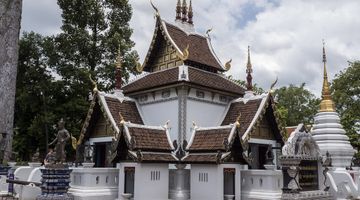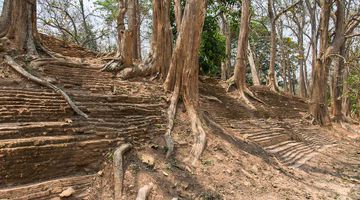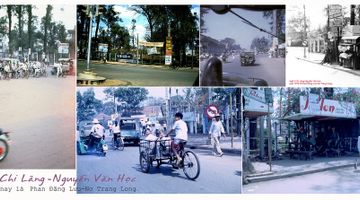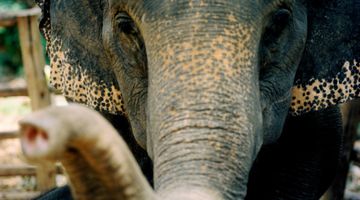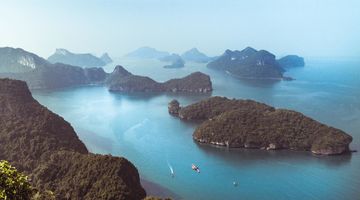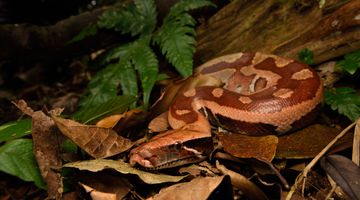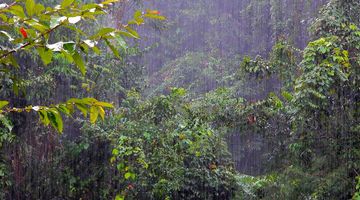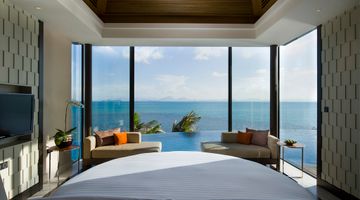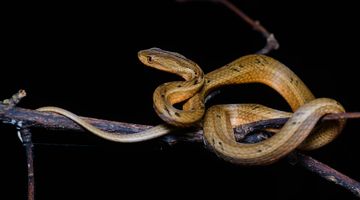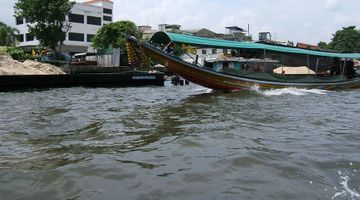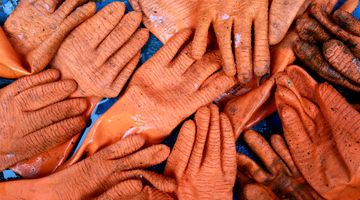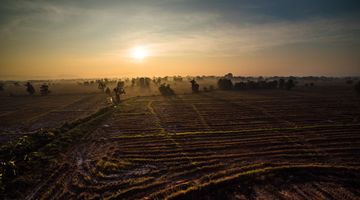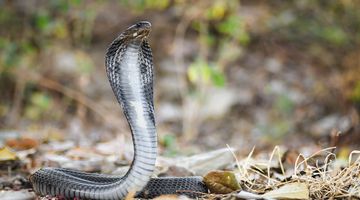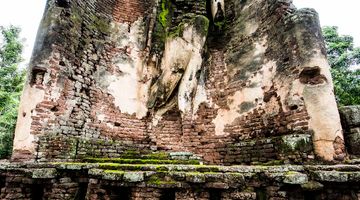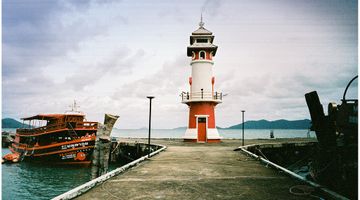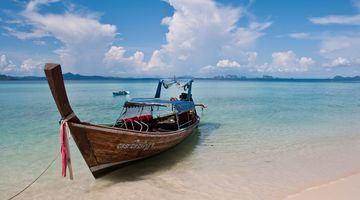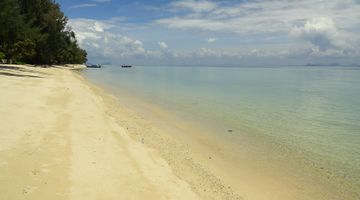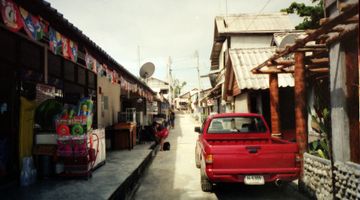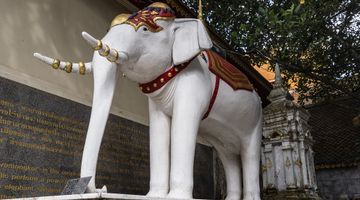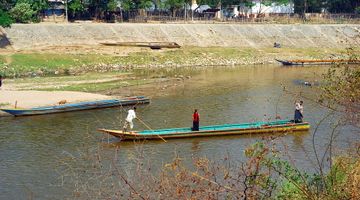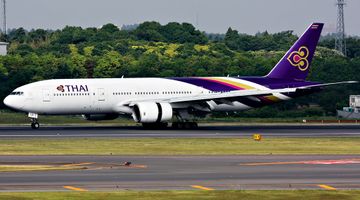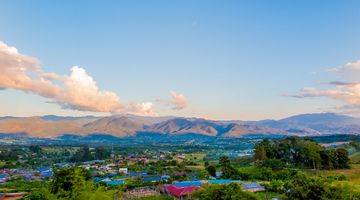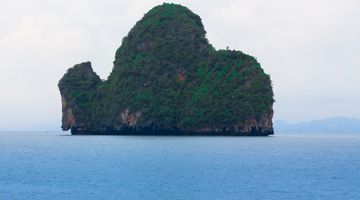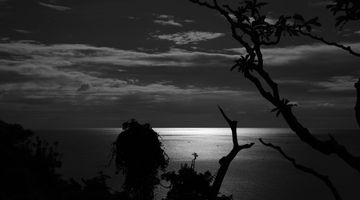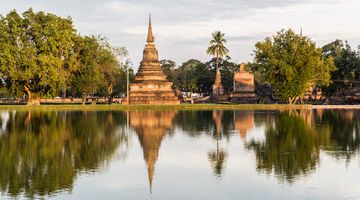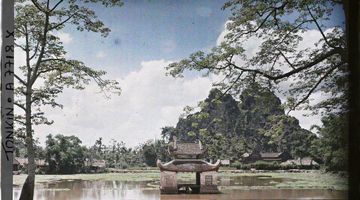Phetchabun Tourist Attractions
The town of Phetchabun cannot boast many tourist attractions. There are several temples to have a look at and a quiet atmosphere of a tranquil northern city to enjoy. But the historical park located in the very couth of the province and the amazing Wat Pha Sorn Kaew in the northwest make a visit to Phetchabun an interesting and not so touristy experience.
Si Thep Historical Park
Si Thep Historical Park is a must stop for everyone interested in history and archaeology. It contains the ruins of an ancient city founded during the Dvaravati period and flourished during the Khmer domination. There are dozens of monuments and the park is quite big even if it’s completely out of radar of the Western tourists. The Department of Fine Arts are still carrying on excavations on site and only some of the ruins have been restored.
Worth mentioning among others is the 9th century Khao Klang Nok, an impressive rectangular structure made of laterite bricks and partially restored, Khao Klang Nai, the oldest construction in the park which is a stupa with the base adorned with elephant images and statues, and Prang Song Phi Nong, a classic example of Khmer architecture and one of the best preserved building in the park.
The new information centre will help you to understand better the history of Si Thep while in the Archaeological Excavation Building you’ll have a closer look to the excavation site where in 1988 a lot of human skeleton were found.
Si Thep is located 130km south of Petchabun town, on the way to Bangkok off highway 21. If you have your own car it can be an interesting stop while driving to Phetchabun (accommodation are available nearby). Similarly, if you travel by bus, it is easy to hop off at Si Thep since almost all the buses traveling from Bangkok to Petchabun stop in Si Thep.
The park is open from 8.30am to 4.30pm, and the entrance ticket is THB100.
Wat Phra That Pha Kaew
Built in 2004 and originally named as Pha Sorn Kaew, this impressive construction changed the name to Wat Phra That Pha Kaew in 2010 when it gained the status of a temple monastery instead of just a holy site.
This is by far one of the most spectacular temples we ever visited in Thailand. The main pagoda and some of the other buildings are covered with more than 5 million pieces of colourful glass and mosaics making it visible and recognizable from afar. You will definitely have a strange feeling of having been transported by some magic to Gaudi’s Park Guell while wandering around the place. At some point golden mosaics may give you an impression of Klimt’s pictures, as well. Combined with handsome Buddhist iconography this produces a really strong effect.
Sitting on top of an 800m hill and surrounded by mountains, forests and lush tropical nature, the temple is completely out of the usual touristy track and despite its extravagant architecture, it’s a quiet monastery with incredible and peaceful views over the neighbouring valleys. If you’re into meditation, Wat Pha Sorn Kaew is considered an important practice centre in Thailand where meditation should be inspired by contemplation of the natural beauties.
The temple can be visited every day and no entrance fee is required. It is located 70 km northwest of Phetchabun, near the town of Khaem Son. If you have your car, drive north over route 21 for 40 km and then turn left on route 12. If you want to take your chances with public transportation, all the local buses going to Phitsanulok should stop in Khaem Son, but make sure you ask at the ticket counter before you get on the bus. The last option you have is to hire a songthaew for the whole day for the return trip (THB1500 approximately).
Temples in town
There are quite a few temples that you can visit while in Phetchabun town proper. As it is common in Thailand, temples don’t have any entrance fee and can be visited by everyone from dawn till sunset.
Wat Mahathat is one of the oldest temples in the region featuring some ancient chedis built in Sukkothai style.
Wat Traiphum is related to a beautiful legend of a Buddha image that once had been found in the river and brought to the temple but then later on strangely disappeared and found again in the same exact spot in the river. Since then every year a procession is organized with the city governor bringing the image of Buddha to the river and submerging it into the water.



